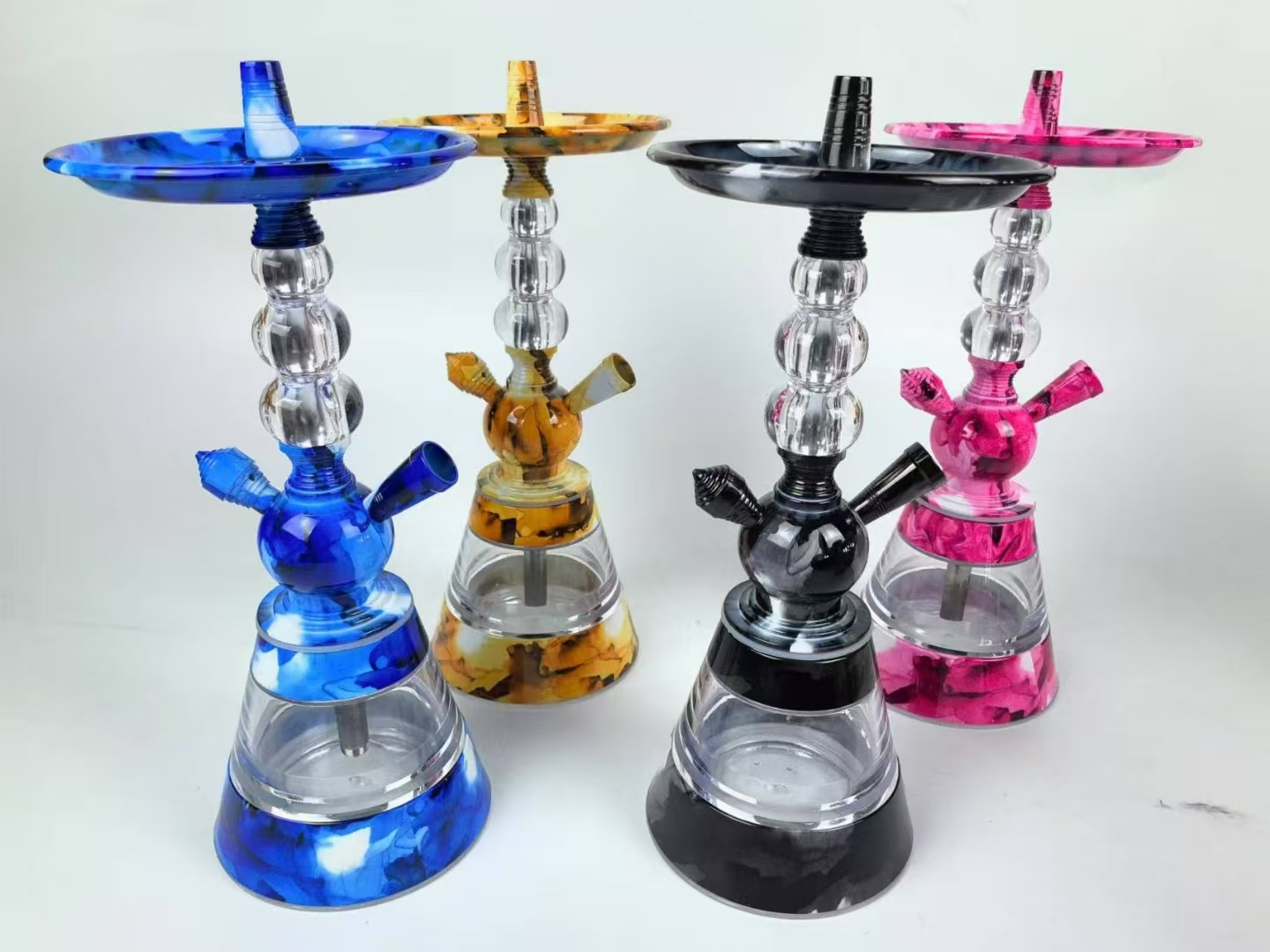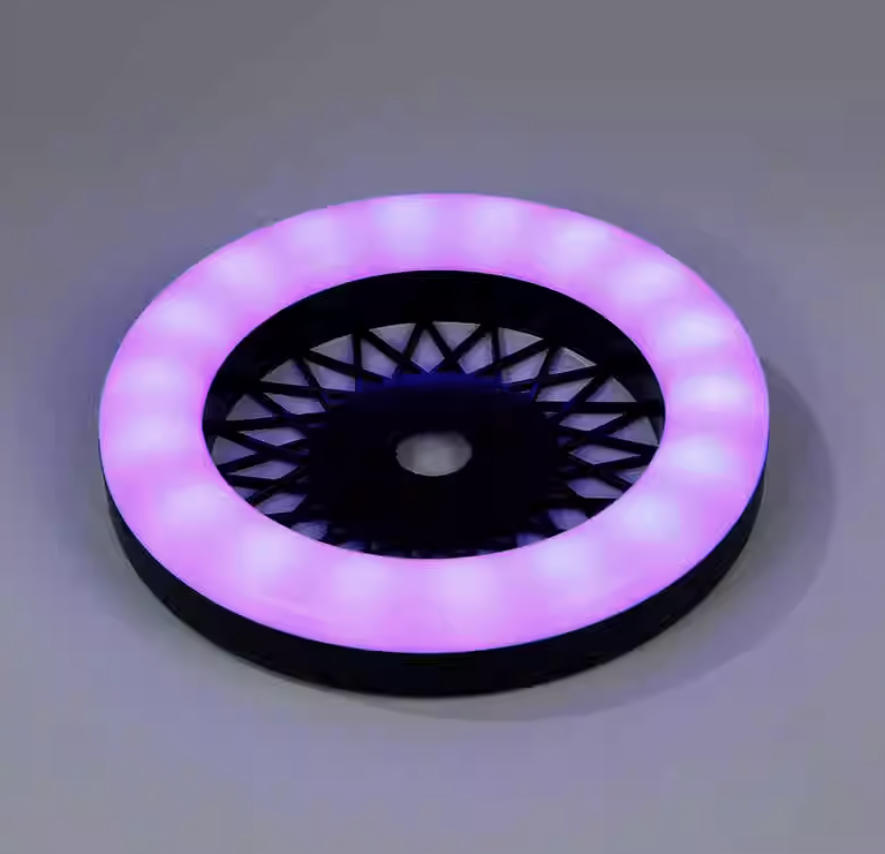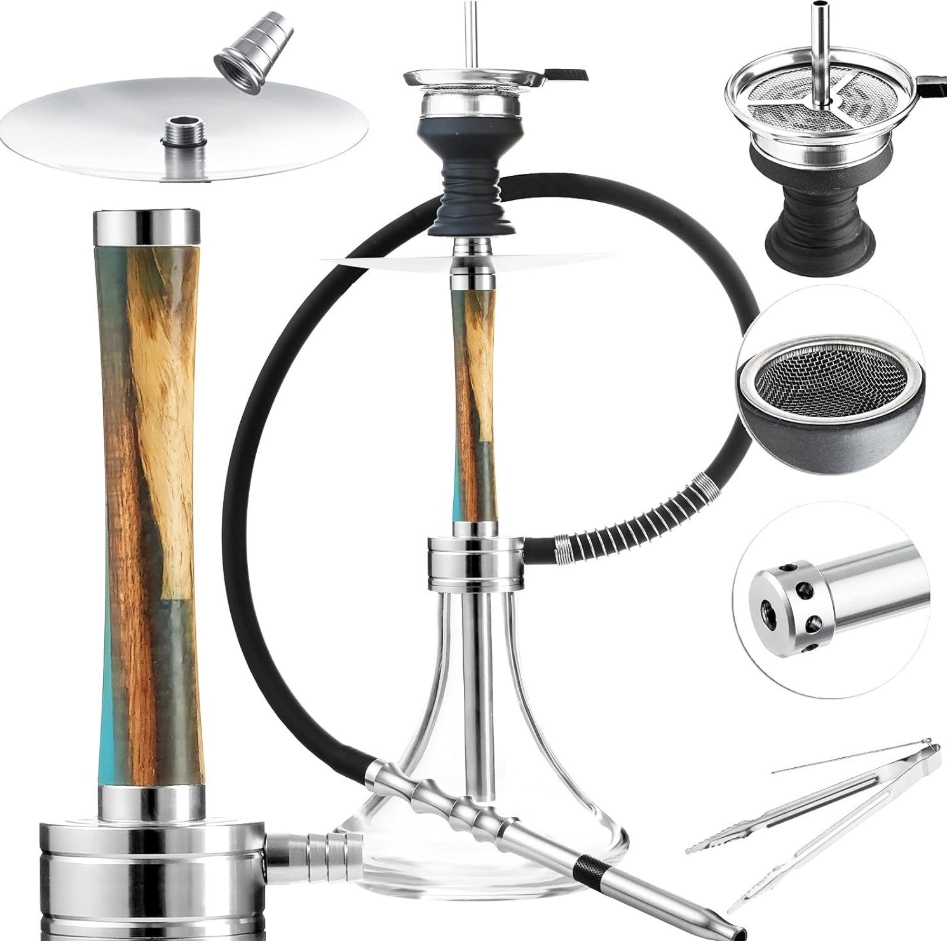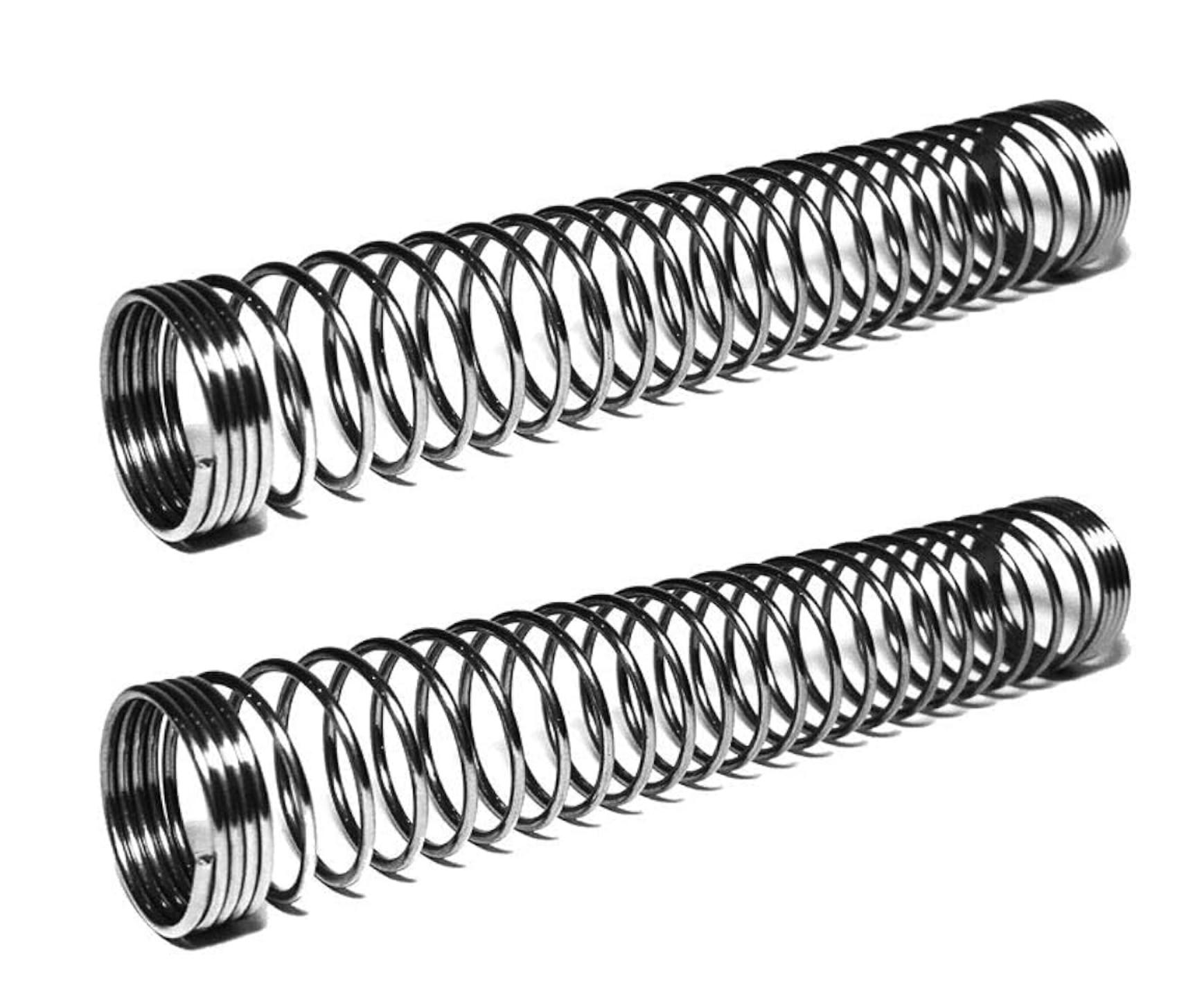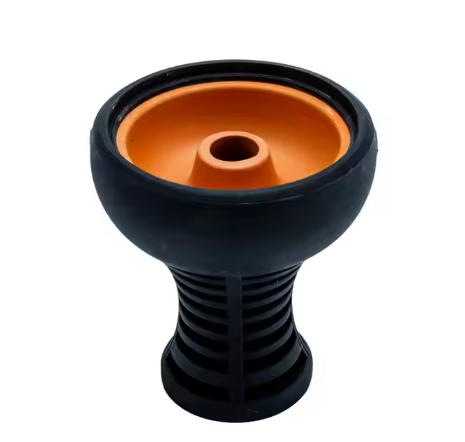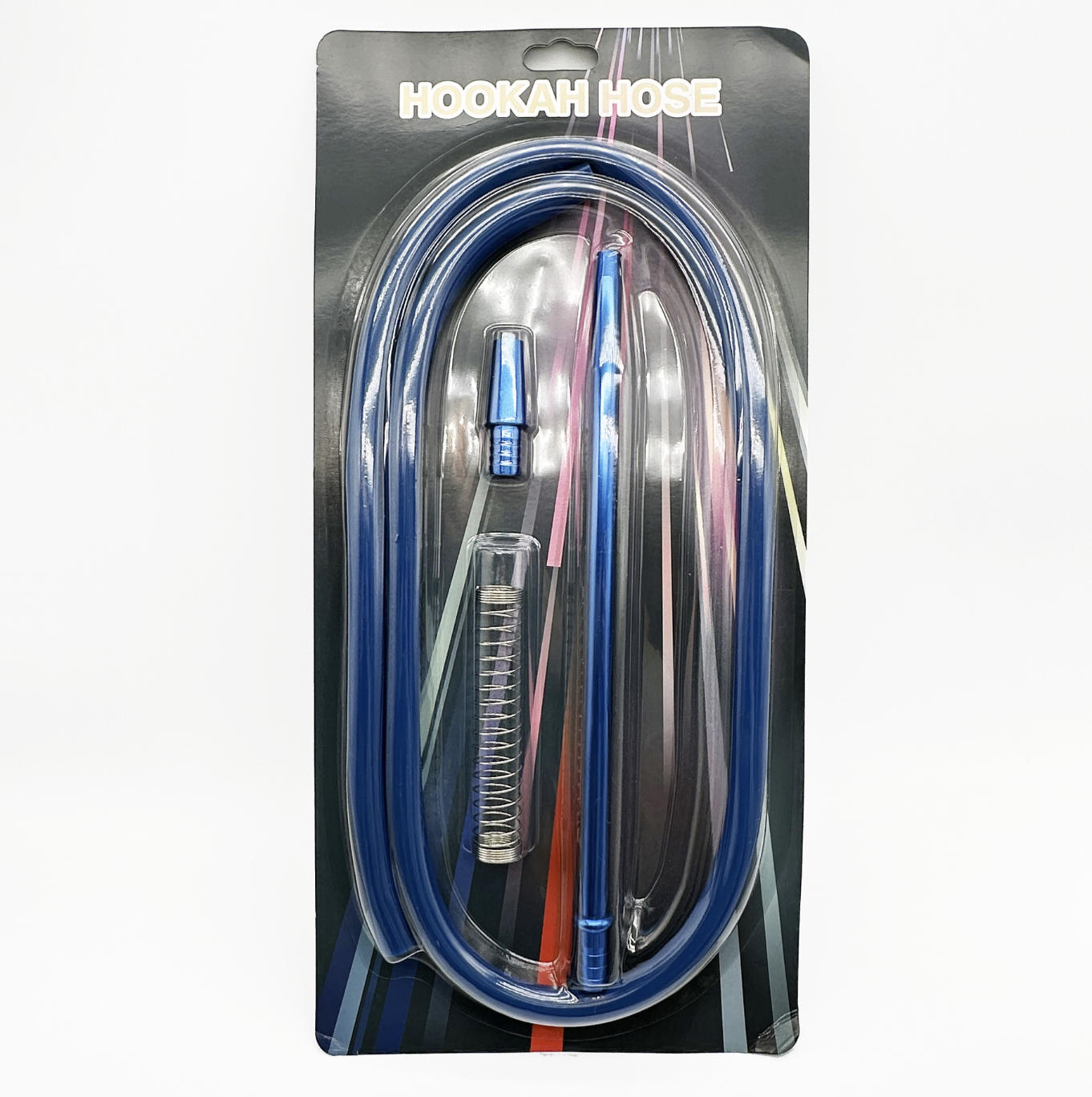Decoding the Price of Hookahs: From Material Science to Craftsmanship
The hookah, a centuries-old smoking apparatus, embodies a complex interplay of material technology, artistic craftsmanship, and cultural heritage. Its price structure reflects not only the cost of raw materials but also the precision of manufacturing processes and the depth of design innovation. Here’s a detailed exploration of the factors that determine hookah prices and the distinctions between budget-friendly and premium options.
I. Material Matrix: The Molecular Basis of Cost
The choice of materials lies at the core of a hookah's value proposition:
-
Glass Alchemy:
- Soda-Lime Glass: Common in entry-level hookahs (under $50), prone to thermal shock.
- Borosilicate Glass: Withstands temperatures up to 1200°C, costs 40% more due to higher melting points and durability.
- Hand-Blown Crystal: Lead content exceeds 24%, creating prismatic light effects. Production waste exceeds 35%, driving costs to over $2000.
-
Metallic Evolution:
- Cast Brass: Susceptible to oxidation, often plated with nickel.
- 304 Stainless Steel: Cold-forged for corrosion resistance, 8x longer lifespan than brass.
- Titanium Alloys (Ti-6Al-4V): Lightweight yet robust, machining costs exceed $280/kg.
-
Ceramic Secrets:
- Jingdezhen Kaolin: Fired at 1320°C, porosity below 3% ensures zero oil penetration. Kiln waste averages 35%.
Hose materials also vary widely:
- PVC Hoses: Leach DEHP plasticizers when heated.
- Medical-Grade Silicon: Withstands 300°C, 12x costlier than rubber.
II. Craftsmanship: Precision at the Millimeter Scale
The battle between hand and machine defines quality thresholds:
- Welding Artistry: Laser-welded seams (0.3mm width) vs. gas-welded scars (>2mm).
- Surface Finishing: Anodized aluminum (50μm oxide layer, HV300 hardness) vs. spray paint (VOC emissions).
- Ergonomic Design: 3D-scanned mouthpieces reduce lip pressure by 30%.
III. Design Innovation: Form Meets Function
High-end hookahs integrate engineering principles:
- Fluid Dynamics: Venturi tubes accelerate airflow by 18%, validated via CFD simulations.
- Thermal Management: Vacuum-insulated double-wall glass (5mm gap) reduces smoke temp by 12-15°C.
- Modular Systems: Magnetic connectors enable 3-second disassembly, with tooling costs exceeding $15,000.
IV. Quality Stratification: From Basic to Luxe
| Attribute | Entry-Level (<$100) | Mid-Range (800) | Premium ($1500+) |
|---|---|---|---|
| Materials | Recycled glass, zinc alloy | Borosilicate glass, SS304 | Titanium, crystal glass |
| Craftsmanship | Visible mold lines, >3mm gaps | Laser welding, <0.5mm tolerance | Micro-engraving, <0.1mm error |
| Durability | 6-month lifespan | 2-3 years | Lifetime warranty |
| Smoke Quality | Particulate-rich, PM2.5 risks | Triple-filtered, 60% cleaner | Nano-filtration, near-sterile |
| Design Features | Generic molds | Patented aerodynamics | Intangible cultural heritage |
| Accessories | Plastic bowls | Ceramic honeycomb bowls | Pure silver etched bowls |
V. Buyer's Compass: Aligning Needs with Budget
-
Value Seekers:
- Borosilicate Glass + SS304 (300): Balances durability and affordability.
-
Social Butterflies:
- Modular LED Systems (800): Perfect for parties with ambient lighting.
-
Collectors:
- Hand-Carved Brass Hookahs ($2000+): Each piece tells a story through engraved motifs.
-
Tech Enthusiasts:
- Digital Temp-Control Hookahs ($1200+): ±1°C precision via PID algorithms.
Conclusion: Beyond the Price Tag
A hookah's value transcends its material cost—it encapsulates human ingenuity in combating entropy. From material scientists optimizing crystal structures to fluid dynamicists mapping smoke trajectories, each price bracket represents a distinct technological solution. By understanding these value codes, buyers can navigate the market with clarity, finding the hookah that best suits their needs—whether it's a budget-friendly starter or a luxurious heirloom.
